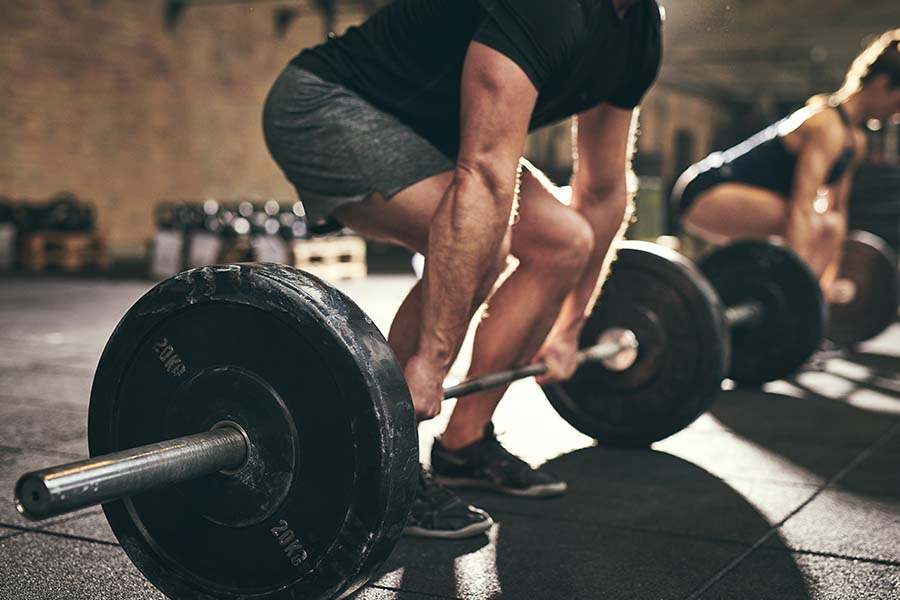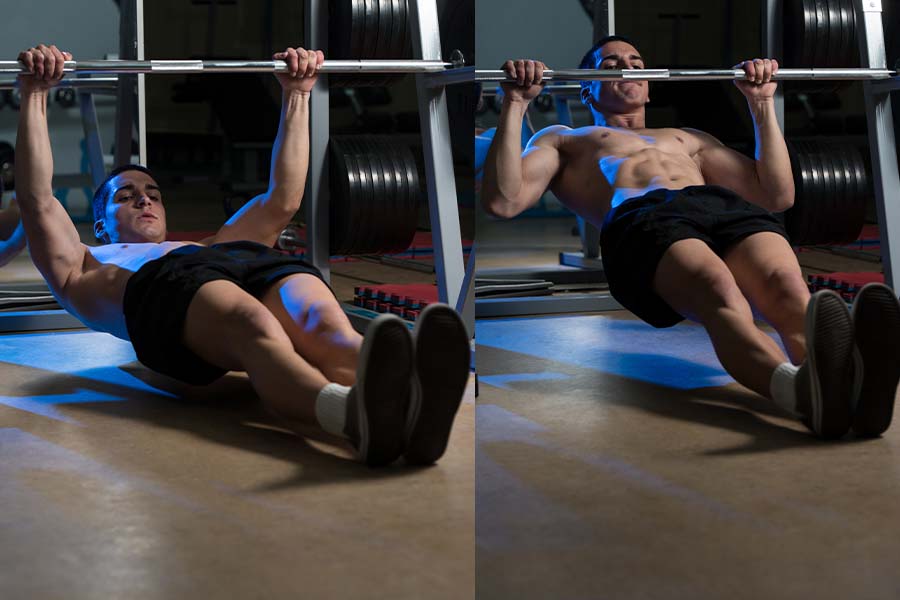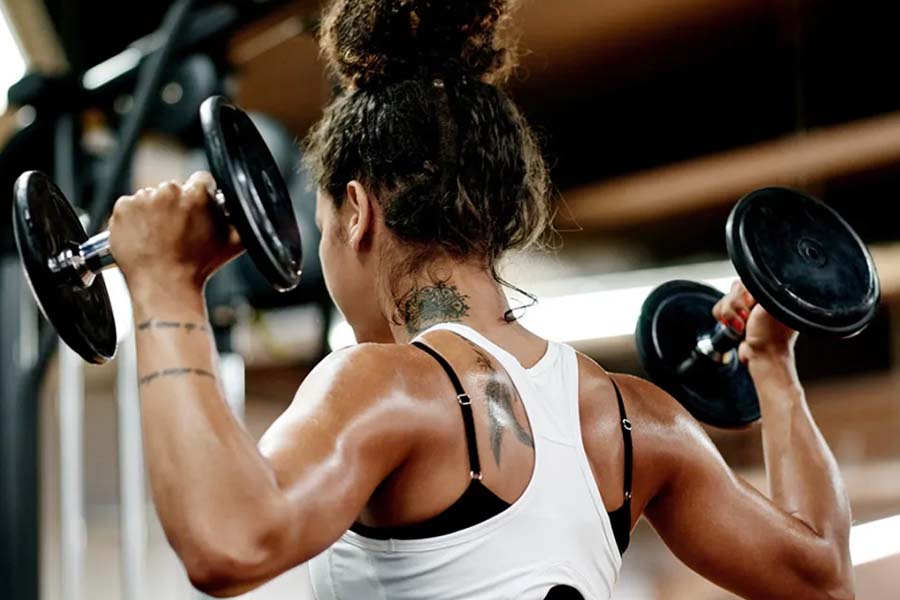Are you tired of schlepping to the gym whenever you want to work out your back muscles? Do you dread fighting for a spot on the bench press or waiting in line for the lat pull-down machine? Well, fear not, our fellow homebodies, because we've got the solution for you: at-home back workouts.
Yes, you heard that right. You don't need to subside the comfort of your own home to get that toned, muscular back you've always wanted. And no, you don't need to invest in expensive equipment or build a full-blown gym in your garage (unless you want to, in which case, go for it!). All you need is a few essential pieces of equipment, a bit of space, and a lot of motivation (or at least the willingness to try).
Your back is one of the largest muscle groups in your body, so it's essential to give it the attention it deserves. A strong back not only looks impressive (hello, shirtless beach photos), but it also helps with good posture, reduces the risk of injury, and improves overall athletic performance.
So, let's explore the four best at-home back workouts for health and muscle growth without further ado. Get ready to channel your inner Schwarzenegger and feel the burn (in the best way possible).
Related Article: Back Day Burnout: Best Back Workout to Build Strong, Muscular & Chiseled Back
Why You Need to Train Your Back
Developing a strong and well-defined back can significantly enhance your overall muscle development and performance in the gym. It can serve as a foundation for deadlifts and squats by providing the necessary stabilizing muscles, ultimately allowing you to lift heavier weights. Additionally, training your back can be an effective way to prevent back injuries.
A more substantial and robust back can better resist the stresses and strains of daily activities, such as bending, lifting, twisting, and turning. This is especially relevant for individuals who spend extended periods sitting at a desk or being sedentary. Furthermore, a strong back can also improve your balance and stability during exercises like overhead presses.
Related Article: Back and Shoulder Workout Routine for Women
Which Muscles Make Up 'the Back'?
When referring to exercising "the back," it is commonly thought of as a particular muscle group. However, the back comprises various muscles and regions that can be categorized differently.
Erector Spinae
The erector spinae is a group of muscles along the spine that spans its entire length. This muscle group comprises several different muscles and forms two mighty columns on either side of the spine.
Their primary function is to assist in the movement of the spine from a flexed position to an upright position. Additionally, the erector muscles support the body against gravity throughout the day, making them the main muscles that run the length of the spine.
Local & Stabilizing Muscles, Including the Multifidus
Smaller muscles are located close to the spine, called local or stabilizing muscles. These muscles, such as the multifidus, stabilize the vertebrae and support the ligaments and tendons surrounding the spine. The primary function of the multifidus and other local muscles is to provide stability to each vertebra in the spine.
Obliques
The oblique muscles are a component of the back muscles. Although these muscles are commonly considered abdominal muscles, they also attach to the thoracolumbar fascia around the back.
The obliques consist of two types: internal and external obliques. Their primary function is to enable trunk rotation and side bending. Additionally, the obliques also contribute to the stability of the trunk.
Latissimus Dorsi & Trapezius Muscles
The latissimus dorsi and trapezius muscles are commonly associated with the functions of the head, neck, and shoulder rather than the back. These two muscles are responsible for several significant movements in the upper body, such as shoulder elevation, depression, protraction, retraction, and rotation.
The latissimus dorsi, the most significant muscle of the upper body, extends from the lower back and attaches to the upper arm's humerus bone.
Teres Major
The teres major muscle is situated on the underside of the upper arm and is relatively small. Despite its diminutive stature, this muscle is essential in several upper body movements, particularly those involving the latissimus dorsi muscle. This is why it's often called "lat's little helper."
Rhomboid Major & Minor
The rhomboid major and minor are two small muscles located beneath the trapezius muscle. These muscles play a crucial role in providing stability to the shoulder complex and aiding in the movement of the shoulder blades.
The rhomboid muscles are responsible for the retraction of the shoulder blades, which means they pull the blades toward the spine.
Related Article: How to Get Rid of Back Fat With Exercise & Diet
The Best Way to Train Your Back
You need to work out constantly to train all the muscles in your back effectively, but that's only sometimes the case. Due to the interconnectedness of the muscles in the back, it's difficult to isolate and target them individually.
Therefore, splitting your back workouts into vertical and horizontal pulling movements is recommended. Vertical pulling movements include exercises such as pull-ups, while horizontal pulling movements include rowing exercises.
Although different areas of the back will be emphasized in each exercise, working them independently is challenging. Various back parts can be trained effectively by dividing the workout into vertical and horizontal pulling movements.
Related Article: Top 10 Lat Pulldown Variations for a Stronger, Wider Back
The 6 Best at-Home Exercises for Your Back
The following exercises are considered superior to others when working out your back. It is recommended to incorporate these movements into your at-home workout routines. Here are some of the best at-home exercises for your back.
1. Deadlift

Generally, when you perform deadlifts, you use most of the muscles that comprise your core, trunk, and legs. The primary working areas are your lower back, glutes, and hamstrings, which comprise the classic posterior chain. Lifting weights also results in increased activity throughout the core.
To do it,
- Assume a hip-width stance and place the powerlifting barbell above your shoelaces.
- Hinge forward and push your hips back, so your torso parallels the floor.
- Pick up the bar with a double overhand grip and pull it slightly. Make sure your armpits are positioned above the bar and are squeezed.
- As you drop your hips, pull up the bar.
- Ensure that you've pulled the bar up in a straight line as you pick the bar up.
- Make sure to keep your weight divided in the whole foot equally.
- Once your hips are locked out, reverse your movement to return to the starting position.
- Repeat for the desired number of reps.
2. Bent-Over Row

If you plan to exercise your back at home, rowing exercises are essential. The bent-over row is one of the best exercises to incorporate into your routine. This particular variation targets several muscle groups, including the middle and lower traps, rhomboid major and minor, upper traps, rear deltoids, and rotator cuff muscles.
To do it,
- Stand while maintaining a neutral grip on the adjustable dumbbells in your hands.
- Keep your head up until your torso is parallel to the floor or slightly higher.
- Let the dumbbells hang at arm's length, keeping your shoulder blades squeezed together and your core engaged.
- From here, bend your elbows and row the dumbbells up to your sides, following with your elbows.
- Squeeze your shoulder blades together at the topmost part of the movement, then lower the dumbbells back down to the starting position.
- Continue repeating until you reach the desired number.
3. Kettlebell Swings

Kettlebell swings engage the core muscles, promoting stability and balance. They can improve grip strength and posture and may even help reduce the risk of injury. Kettlebell swings are an excellent exercise to target your back's posterior chain.
To do it,
- Take up a hinged position with your knees slightly bent and hold the kettlebell handle in both hands.
- Keep your chin tucked and your weight equally distributed around your foot.
- Keep your spine neutral and hike the kettlebell between your legs.
- Then pull the kettlebell back to the starting position by extending your hips and keeping your arms straight.
- Repeat for the desired number of reps.
4. Inverted Row

At first glance, performing an inverted row exercise at home may seem challenging. It's important to note that the difficulty level of this exercise can be adjusted based on the placement of your feet, making it more challenging or accessible. This exercise primarily targets your upper back muscles.
To do it
- Place a level bench in front of the smith machine and place it lengthwise.
- Set the smith machine bar's position to roughly 4 feet off the ground.
- Align yourself on the seat with your heels on it and your hands somewhat broader than shoulder width.
- Upright your spine. This is where you'll begin.
- Pull your upper body to the bar level while keeping your body straight.
- Return to the starting position after a brief pause.
- Rep until you've reached your desired number of reps.
Related Article: How to Get Back Into Fitness: 10 Ways to Kickstart Your Fitness Routine
Conclusion
Back workouts can be tricky for most bodybuilders, but continuing work on your back is vital to develop a robust, well-defined back and overall muscle and good performance. Back workouts target your erector spinae teres major, latissimus dorsi and trapezius, rhomboid major and minor, and Local and stabilizing muscles, including the multifidus.
The best way to train your back is by splitting your workouts into vertical and horizontal pulling movements. For example, pull-ups are vertical, while rowing exercises are horizontal.
The best 4 at-home back workouts are deadlifts, bent-over rows, kettlebell swings, and an inverted row. These workouts can help you build muscle and improve your health!
Reading List
Article Sources
- Gordon, Rebecca, and Saul Bloxham. "A Systematic Review of the Effects of Exercise and Physical Activity on Non-Specific Chronic Low Back Pain". Healthcare, vol. 4, no. 2, Apr. 2016, p. 22. PubMed Central, https://doi.org/10.3390/healthcare4020022.











